Penn State Commission for Women in Hershey’s Climate Survey was launched April 3, 2017, and completed by 1,535 Penn State Health Milton S. Hershey Medical Center employees (76.9 percent of total respondents), College of Medicine employees (19 percent) and College of Medicine students (4.1 percent). The mean age of respondents was 43.3 years old, and the majority of respondents identified as female (79.8 percent).
Jump to topic
Search
Survey Findings
- Female faculty and staff were most interested in salary equity and benefits compared with other interests.
- Female students have very different interests and needs compared with female faculty and staff. Students were most interested in managing their work/life/school balance, diversity and academic performance and reported the greatest dissatisfaction with health insurance and services and availability and quality of university housing.
- Female respondents report more interested in health and wellness at work compared with males.
- More than a third of respondents were dissatisfied with their workspace.
- Females were less likely than males to report being recognized for their work, with female staff the least likely to report recognition.
- Males and students were the most likely to report opportunities for leadership.
- Female faculty were the most likely to have and want a mentor.
- Generally department climate is perceived positively among both females and males.
- Diversity within the respondents department was the item rated the lowest, especially among female students.
- Educate on salary determination policies.
- Prioritize health and wellness at work.
- Encourage the recognition of females at all level of employment and provide opportunities for leadership.
- Promote and foster diversity.
Survey Demographics
The survey was released April 3, 2017, to all Penn State Health Milton S. Hershey Medical Center employees, College of Medicine employees and College of Medicine students.
Total completed surveys: 1,521
Mean age of survey respondents: 43.2 years (range: 20 to 85)
Gender of respondents: Female (79.8 percent; n=1,214), Male (19.7 percent; n=299), Other (0.5 percent; n=8)
Employer of respondents: HMC (76.9 percent) (n=1,172), COM (19 percent; n=288), Student (4.1 percent; n=61)
Reported job title of respondents: Faculty (18.1 percent), Staff (76.6 percent), Student (5.3 percent)
Topics of Importance and Satisfaction with Campus Resources
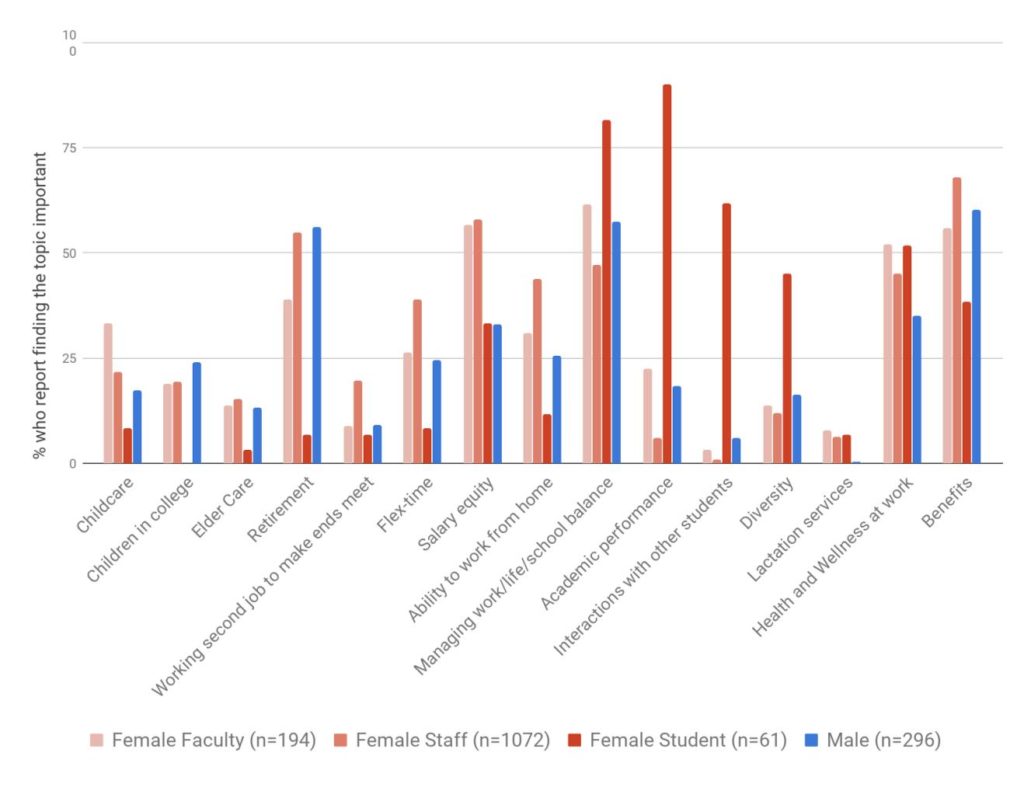

20.6 percent (250 of 1,213) of female survey respondents reported being a nursing mother while at Penn State Health Milton S. Hershey Medical Center/Penn State College of Medicine in the year preceding the survey.
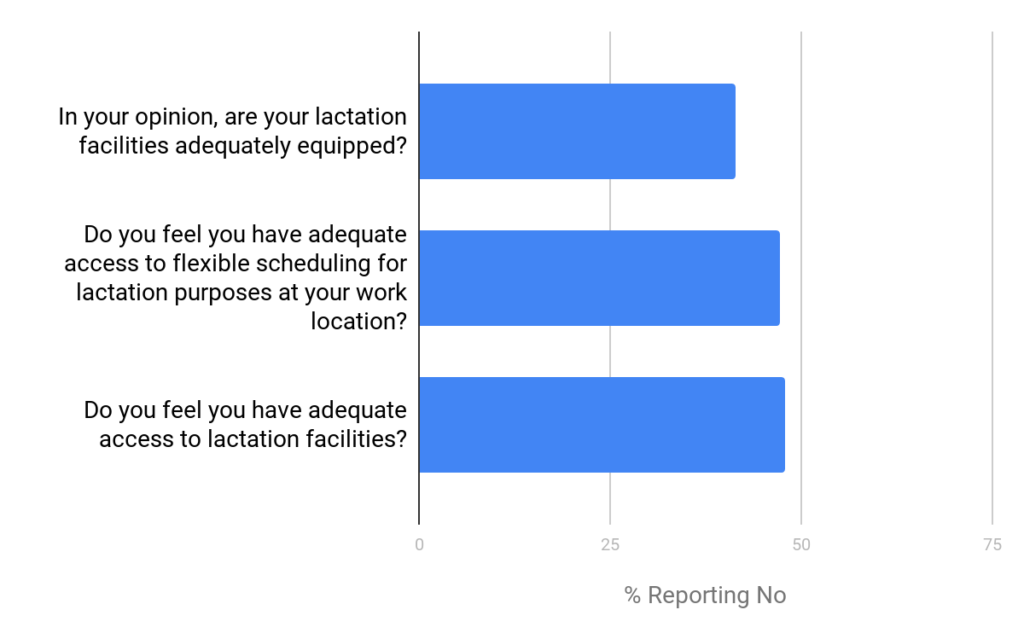
- Female faculty and staff were most interested in salary equity, retirement and benefits.
- Females were more interested in health and wellness at work compared with men.
- Female students had very different interests and needs compared to female faculty and staff, indicating their unique place on campus.
- Students were most interested in managing their work/life/school balance, diversity and academic performance and reported the greatest dissatisfaction with health insurance and services and availability and quality of university housing.
- Approximately a third of all survey respondents were dissatisfied with their workspace, where female staff reported the greatest dissatisfaction.
- Approximately one-half of nursing mothers reported that they did not feel the lactation spaces are properly equipped or that they had adequate access and time to use the space.
Recognition, Leadership and Mentorship
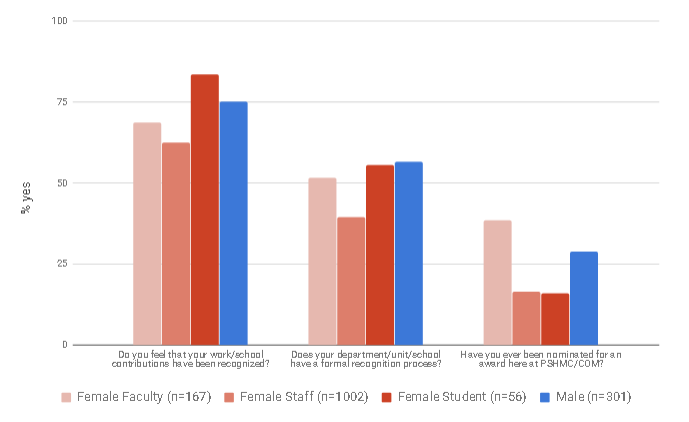
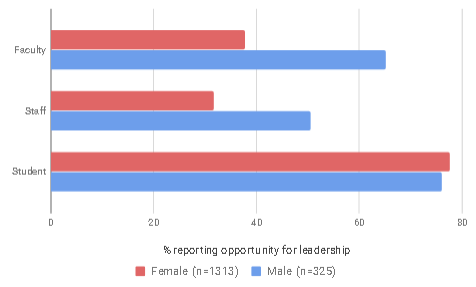
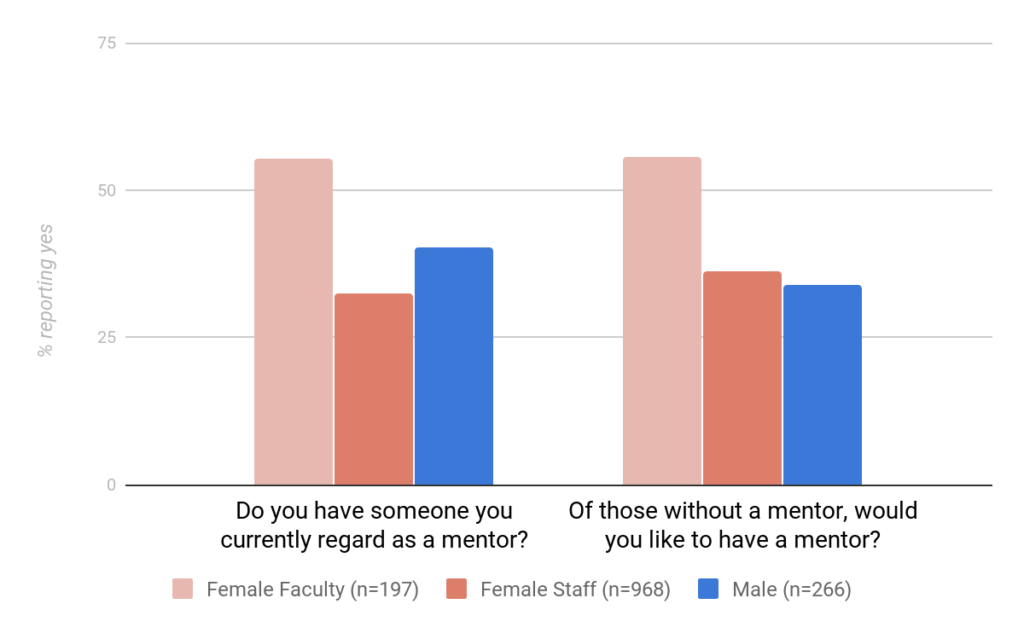
- Females were less likely than males to report being recognized for their work, with female staff the least likely to report recognition.
- Males and students were the most likely to report opportunities for leadership.
- Female faculty were the most likely to have and want a mentor.
Department Climate
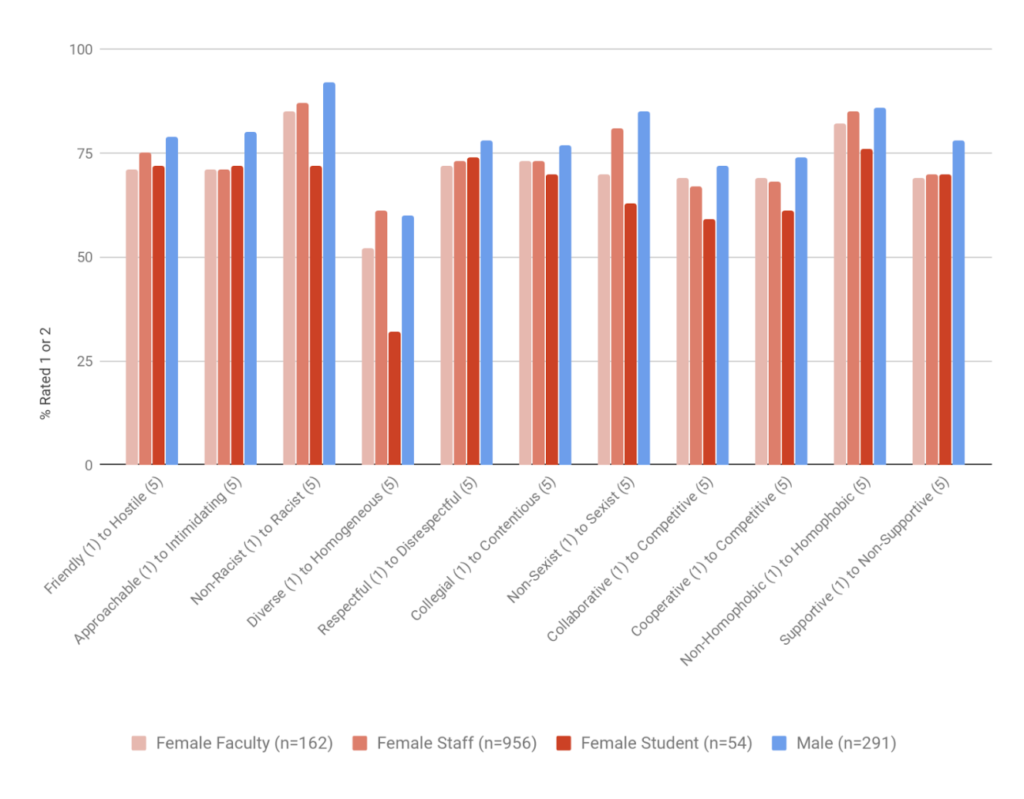
- Generally, department climate was perceived positively among both females and males.
- Diversity was the item rated most negatively, especially among female students.
Comparison to 2014 Pilot Survey completed by CFW Members
- Survey was completed by 108 CFW members (23.2 percent faculty, 72.2 percent staff, 4.6 percent student).
- The most important topics of interest for women were retirement (46 percent), working from home (49 percent) and salary equity (56 percent).
- Retirement and salary equity remained important topics of interest.
- 41 percent of prior nursing mothers expressed inability to access lactation spaces and 22 percent expressed difficulties scheduling time to do so.
- Access to lactation spaces remains the same.
- 27 percent of women were formally recognized for their work achievements.
- Female faculty were the most likely to be recognized. Only approximately 15 percent of female staff and students were recognized.
- 54 percent of women reported they were willing to take on leadership positions; 50 percent report that they have no opportunities.
- Less than half of female faculty and staff have reported an opportunity for leadership.
